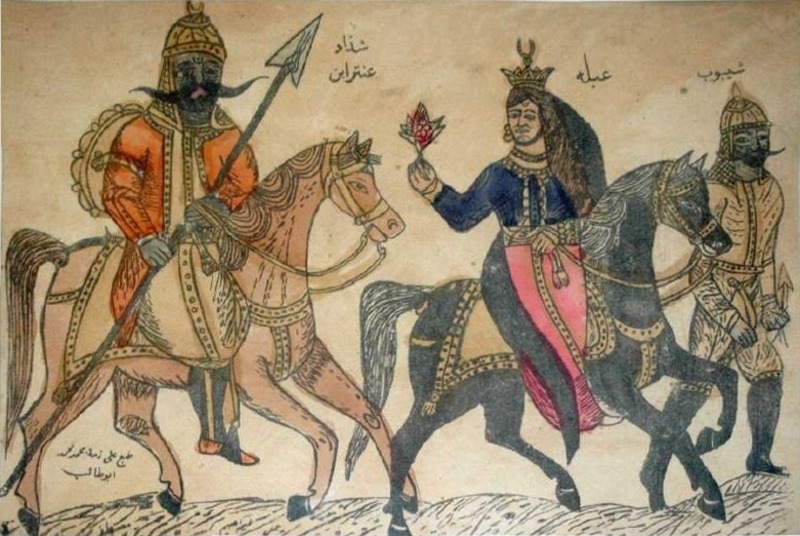پرونده:Antarah ibn Shaddad & Abla.jpg
Antarah_ibn_Shaddad_&_Abla.jpg (۸۰۰ × ۵۳۶ پیکسل، اندازهٔ پرونده: ۱۳۷ کیلوبایت، نوع MIME پرونده: image/jpeg)
تاریخچهٔ پرونده
روی تاریخ/زمانها کلیک کنید تا نسخهٔ مربوط به آن هنگام را ببینید.
| تاریخ/زمان | بندانگشتی | ابعاد | کاربر | توضیح | |
|---|---|---|---|---|---|
| کنونی | ۲۲ ژانویهٔ ۲۰۱۴، ساعت ۱۸:۵۸ |  | ۸۰۰ در ۵۳۶ (۱۳۷ کیلوبایت) | Carnby | Better crop |
| ۲۹ مارس ۲۰۰۹، ساعت ۰۴:۰۱ |  | ۷۷۷ در ۵۱۷ (۱۱۵ کیلوبایت) | BomBom | cropped image borders | |
| ۱۵ فوریهٔ ۲۰۰۹، ساعت ۲۲:۴۸ |  | ۸۰۰ در ۵۳۶ (۱۲۹ کیلوبایت) | BomBom | {{Information |Description=A 19th-century tattoing pattern depicting pre-Islamic Arab hero and poet Antarah ibn Shaddad (left) and his lover Abla (middle) riding horses. The character on the right is called Shayyoub. The inscript |
کاربرد پرونده
صفحهٔ زیر از این تصویر استفاده میکند:
کاربرد سراسری پرونده
ویکیهای دیگر زیر از این پرونده استفاده میکنند:
- کاربرد در ar.wikipedia.org
- شعر عربي
- عنترة بن شداد
- خط الرقعة
- أدب عربي
- ألف ليلة وليلة
- غزل (شعر)
- موسيقى عربية
- حمارة القايلة
- طرب أندلسي
- ثقافة العراق
- عبلة بنت مالك
- حماسة (شعر)
- عصور الأدب العربي
- قالب:ثقافة عربية
- سجاد عربي
- عنترة (مسرحية)
- شيبوب بن شداد
- ثقافة عربية
- مراسم الزواج عند العرب
- مطبخ عربي
- جاز شرقي
- أدب الملحمة العربية
- مستخدم:محمد رشاد ابوالنجا/ملعب12
- فن نبطي
- مستخدم:عمر/ملعب 3
- الفروسية في التاريخ الإسلامي
- مستخدم:EgyAbodggg5g70868
- رموز الشرف عند البدو
- الفن الفاطمي
- جوامع اللذة (موسوعة تراثية)
- مقام (مزار)
- مستخدم:عمر/معلب 4
- قالب:تصفح مقالات مشروع العلمانية والمساواة
- ويكيبيديا:العلمانية والمساواة
- نثر مقفى
- کاربرد در arz.wikipedia.org
- کاربرد در az.wikipedia.org
- کاربرد در bn.wikipedia.org
- کاربرد در bs.wikipedia.org
- کاربرد در ca.wikipedia.org
- کاربرد در da.wikipedia.org
- کاربرد در de.wikipedia.org
نمایش استفادههای سراسری از این پرونده.



